Advertisements
Advertisements
प्रश्न
Complete the paragraph by choosing the right options given below.
(minimum, near point, 25 cm, farthest, farthest distance, far point)
The _______ distance of an object from a normal eye, at which it is clearly visible without stress on the eye, is called the minimum distance of distinct vision. The position of the object at this distance is called the _______ of the eye, for a normal human eye, the near point is at _______. The _______ distance of an object from a human eye, at which it is clearly visible without stress on the eye is called _______ of distinct vision. The position of the object at this distance is called the _______ of the eye.
उत्तर
The minimum distance of an object from a normal eye, at which it is clearly visible without stress on the eye, is called the minimum distance of distinct vision. The position of the object at this distance is called the near point of the eye, for a normal human eye, the near point is at 25 cm. The farthest distance of an object from a human eye, at which it is clearly visible without stress on the eye is called farthest distance of distinct vision. The position of the object at this distance is called the far point of the eye.
संबंधित प्रश्न
The optical prescription for a pair of spectacles is :
Right eye : −3.50 D
Left eye : −4.00 D
Which is the weaker eye?
What job does the pupil of the eye do?
Out of rods and cones m the retina of your eye:
which detect colour?
State whether the following statement is true or false:
The image formed on our retina is upside-down
Where does the greatest degree of refraction of light occur in the eye?
What do the ciliary muscles do when you are focusing on a nearby object?
Give the scientific names of the following parts of the eye:
carries signals from an eye to the brain.
Fill in the following blank with suitable word:
The part of eye sensitive to light is...................
The eyes of a person are focused (i) on a nearby object, and (ii) on a distant object, turn by turn. In which case:
the focal length of eye-lens will be the maximum?
Why does it take some time to see objects in a dim room when you enter the room from bright sunshine outside?
How does this affect the amount of light entering the eye?
What are rods and cones in the retina of an eye? Why is our night vision relatively poor compared to the night vision of an owl?
Draw a simple diagram of the human eye and label clearly the cornea, iris, pupil, ciliary muscles, eye-lens, retina, optic nerve and blind spot.
Explain why, we cannot see our seats first when we enter a darkened cinema hall from bright light but gradually they become visible.
fill in the following blank with suitable word:
A person is short-sighted if his eyeball is too............Spectacles with a .............lens are needed. A person is long-sighted if his eyeball is too............Spectacles with a ................lens are needed. These focus light rays exactly on to the..........
A man driving a car can read a distant road sign clearly but finds difficulty in reading the odometer on the dashboard of the car. Which of the following statement is correct about this man?
(a) The near point of his eyes has receded away.
(b) The near point of his eyes has come closer to him.
(c) The far point of his eyes has receded away.
(d) The far point of his eyes has come closer to him.
What are the advantages of having two eyes instead of just one?
Mention the characteristics of the image that falls on the retina of the eye.
Choose the correct answer.
Which one is the photoreceptor _____________
Choose the correct answer.
Colour is detected by ____________
Differentiate between:
Retina and Choroid.
Name the following:
Yellow spot and ciliary muscles are found in.
Give Technical Term:
The cells of the retina that are sensitive to colour.
Write the name.
The part of human eye that transmits electrical signals to the brain.
Name the capacity of the eye lens to change its focal length as per need.
The larynx has fold of tissue which vibrate with the passage of air to produce sound.
The pigmented circular area seen in front of the eye:
A prism ABC (with BC as base) is placed in different orientations. A narrow beam of white light is incident on the prism as shown in Figure . In which of the following cases, after dispersion, the third colour from the top corresponds to the colour of the sky?
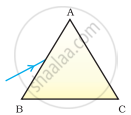 |
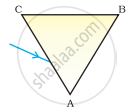 |
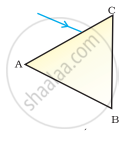 |
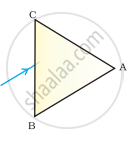 |
| (i) | (ii) | (iii) | (iv) |
Explain the structure and functioning of Human eye. How are we able to see nearby as well as distant objects?
Which of the following statements is correct regarding rods and cones in the human eye?
What is ‘white of the eye’?
Select the option with incorrect identification:
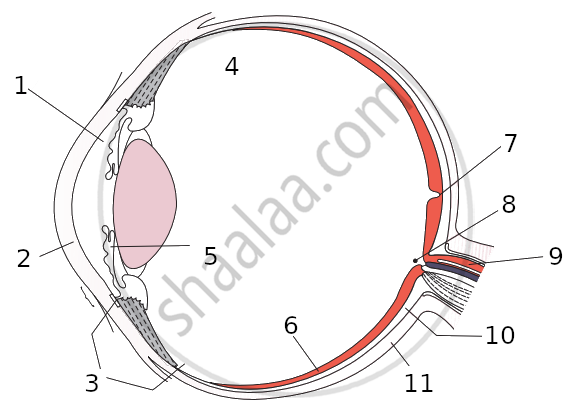
With reference to human eye, answer the following question.
What is aqueous humor?
Match the following:
| Column - I | Column - II | ||
| 1 | Retina | a | Path way of light |
| 2 | Pupil | b | Far point comes closer |
| 3 | Ciliary muscles | c | near point moves away |
| 4 | Myopia | d | Screen of the eye |
| 5 | Hypermetropoia | e | Power of accomodation |
Given below is a cross section of the human eye. Match the structures marked (a) to (e) with their correct functions:
Example: (f) - 6. Holds the lens in position
| Cross section of Human Eye | Functions | |
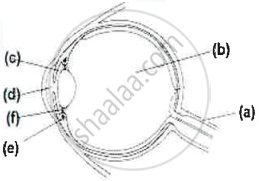 |
1. | Protects retina |
| 2. | Regulates the size of the pupil | |
| 3. | Alters the shape of the lens | |
| 4. | Keeps the lens moist | |
| 5. | Transmits nerve impulses to brain | |
| 6. | Holds the lens in position |
An aperture that controls the passage of light into the eye is ______.
The thin, transparent extension of sclerotic layer found in front of the lens is ______.
Differentiate between members of the following pair with reference to what is asked in the bracket.
Aqueous humour and vitreous humour (location).
